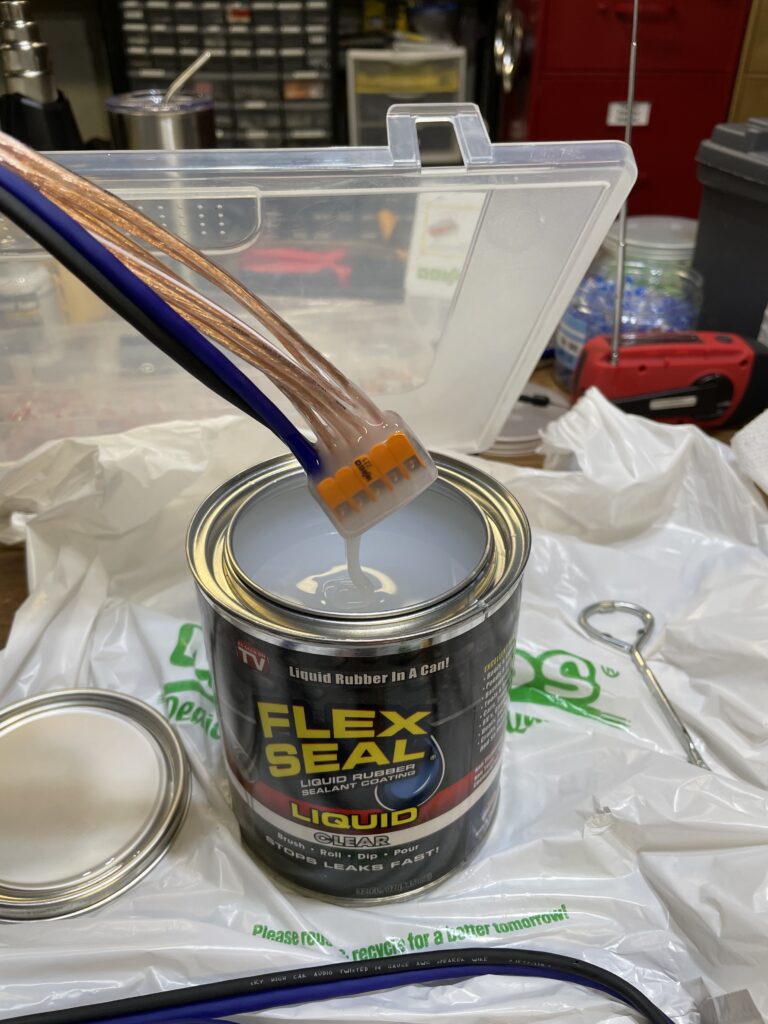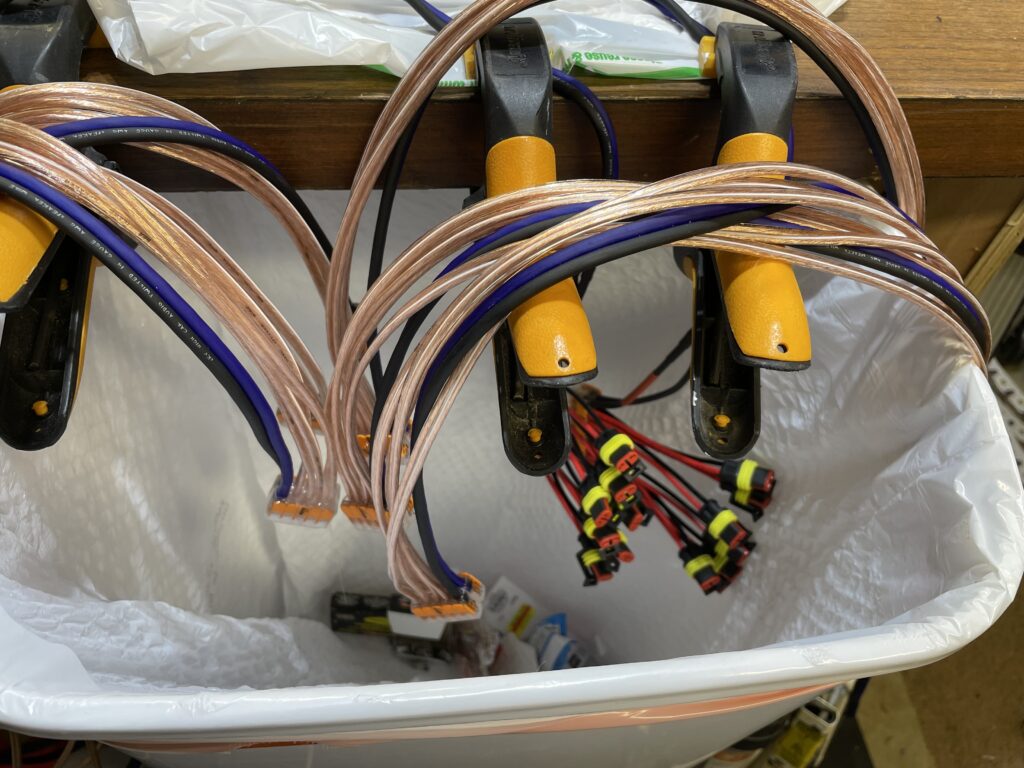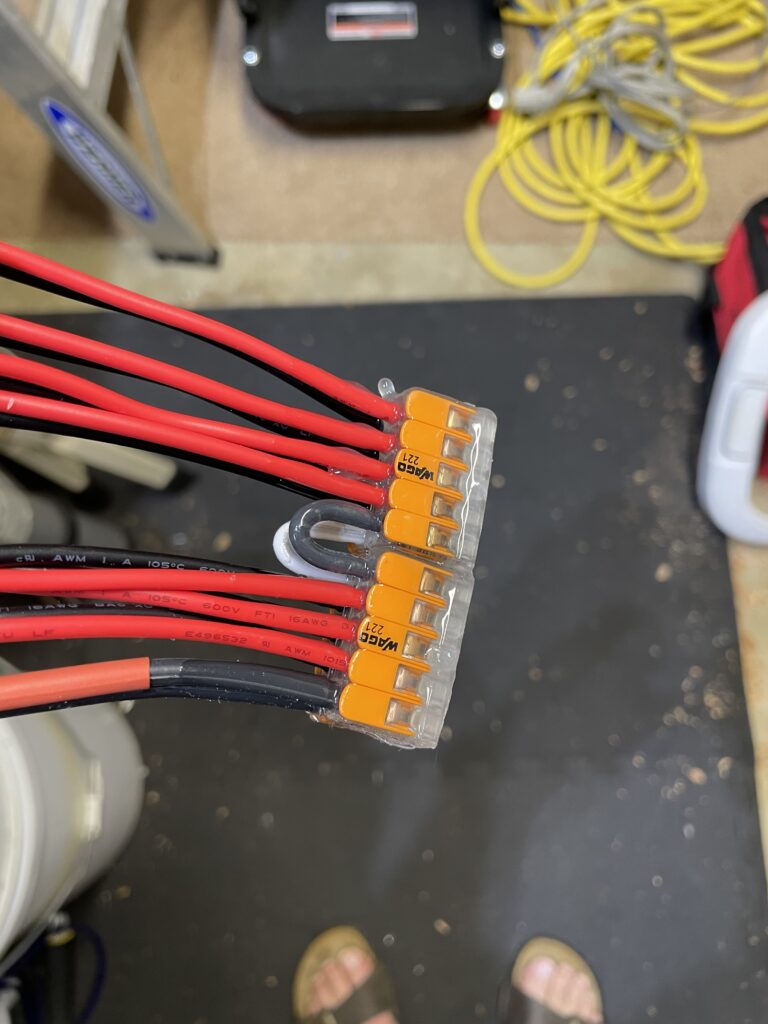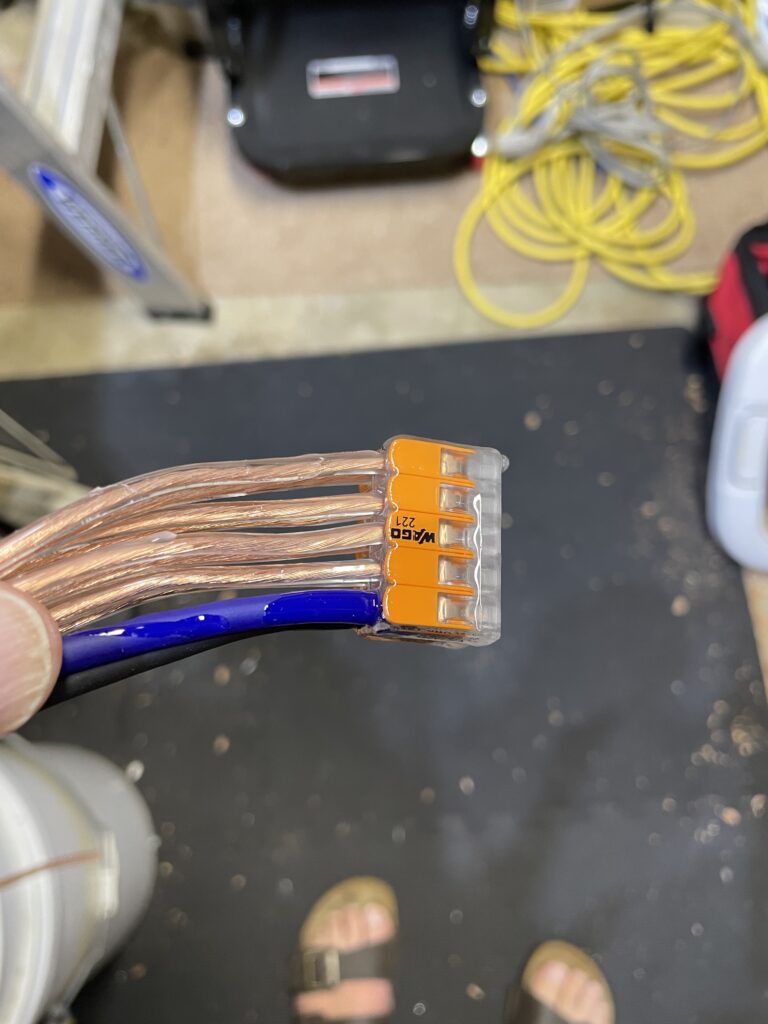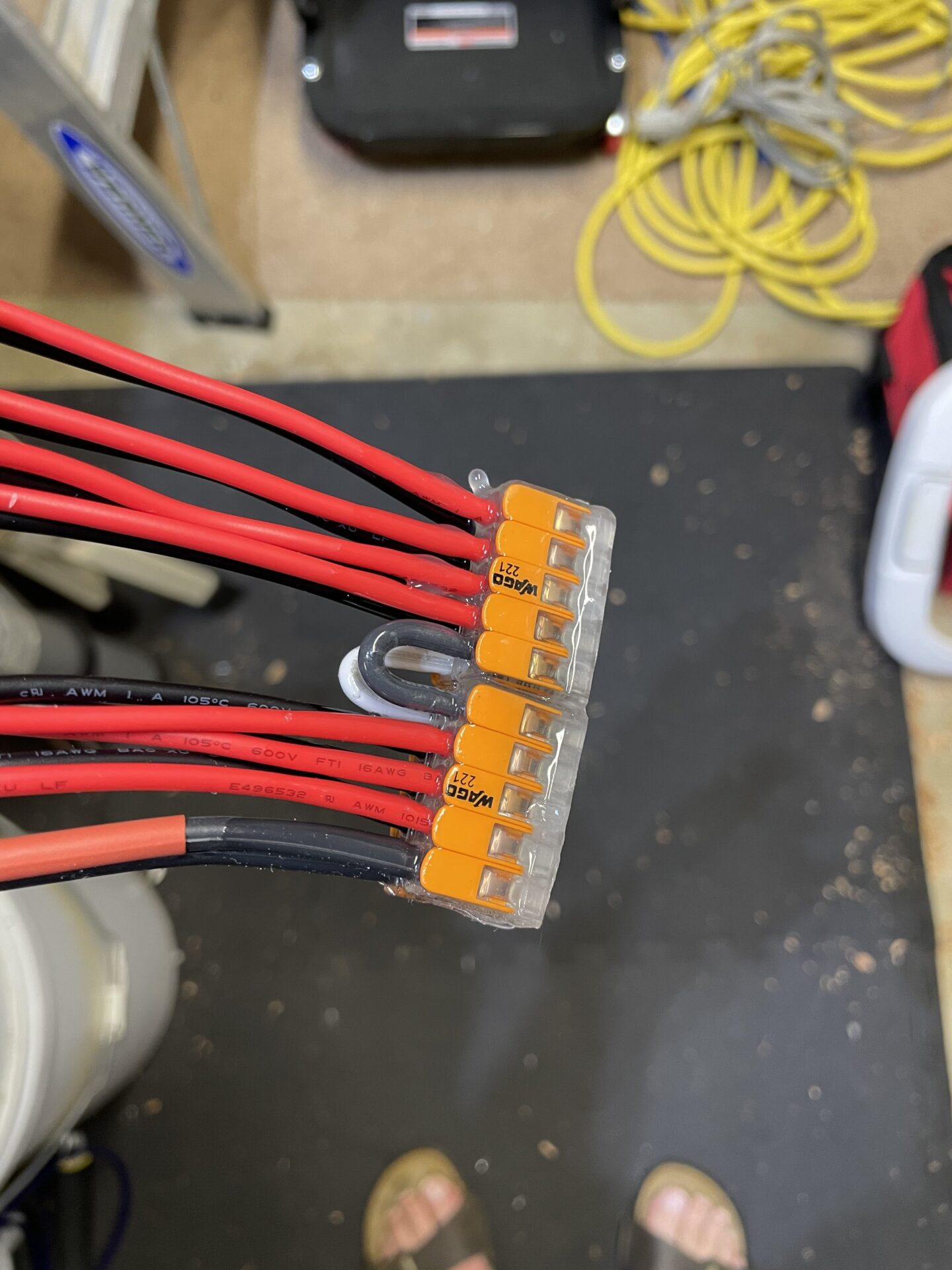
Wago Power Bus
Important Notice
This site is no-longer being maintained, and the content and links found here may be irrelevant and outdated. It is online for archival purposes only.
This is one of those: “I’m going to see if this works…” builds.
I needed some power buses for the top and bottom of our mega tree. The biggest down-side (and only, in my opinion) to using 5v pixels is you need a lot of power injection. We are using 75px. strands, so applying the “50 pixel rule“- I’m injecting at the top and bottom. That means for 24 strands- I have 12 injection points on each end.
I thought about wire nuts, solder, or a whole lot of splices, but decided instead to go with my favorite electrical connector- WAGO!
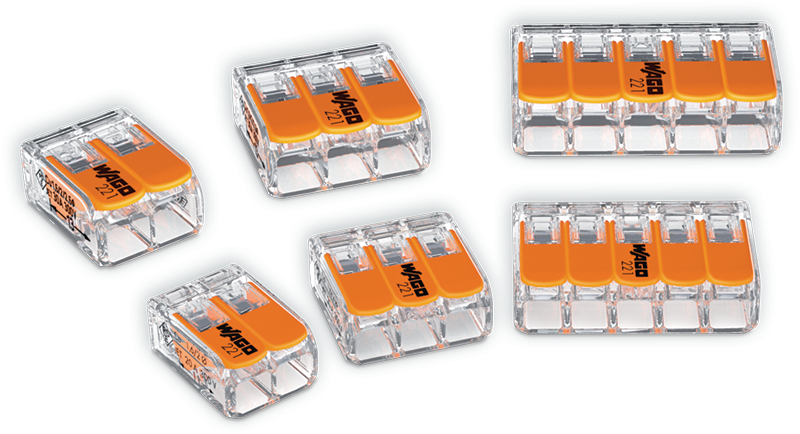
Of course, the problem with them is they are NOT water/weatherproof, at all. I did use them in a pinch outside in a few places last year, but filled them with dielectric grease first. Still- there was visible corrosion inside where the dielectric grease didn’t go by the end of the season.
So, I decided to waterproof them with Flex Seal Liquid. I originally thought of using Plasti-Dip, but couldn’t find the stuff anywhere locally. Presumably it would work just as well. I thought about Liquid Electrical Tape, but it’s way too thick and I don’t think it would soak in to all the crevices and openings in the Wago connectors.
For the top of the tree, I needed a lot of wires close together, so I connected two sets of Wago 5-wire connectors together using short loops of 12Ga solid copper wire. My power feed comes in one end, and I just directly connected all of the automotive power connectors I use into the rest of the slots. For the bottom of the tree, I didn’t need as much density, so I just used single 5-wire connectors with longer lengths of zip-cord spliced into the power connectors. In both cases, I fastened the Wagos back-to-back with a dab of hot glue.
Here is what the process looked like:
I dipped them three times, waiting 24 hours between each coat. The connectors and wires are encapsulated in a nice thick coat of rubber and should be completely waterproof. I inspected them to make sure there were no openings left. I used clear Flex Seal so I can inspect them for any corrosion, especially at the end of the season.
I’m really happy with how they turned out. I will post an update if I run into any issues with them at all, but for now- I think this is a great solution. I might do something similar for some other props as-well.
UPDATE, September 2022
These worked flawlessly, and there is no visible corrosion in any of the assemblies. I’ve built several more for this year’s higher-density Maga Tree, Maxi Tree, and our Starburst topper using the same process. I feel this is an excellent option for junctions that can’t be built using solder-seals or other similar waterproof connectors.



